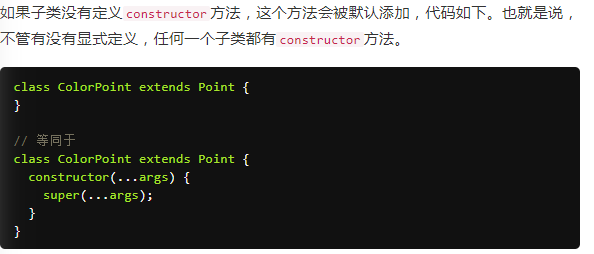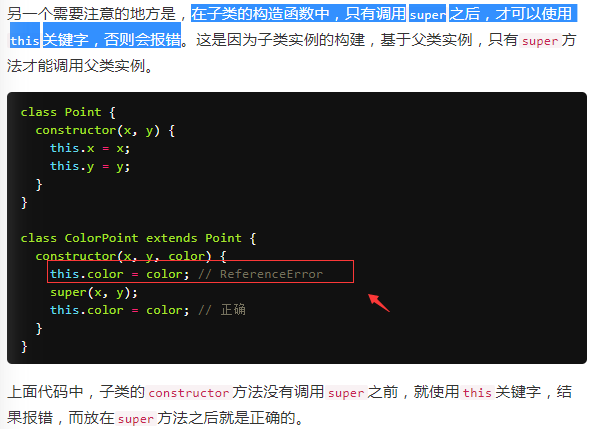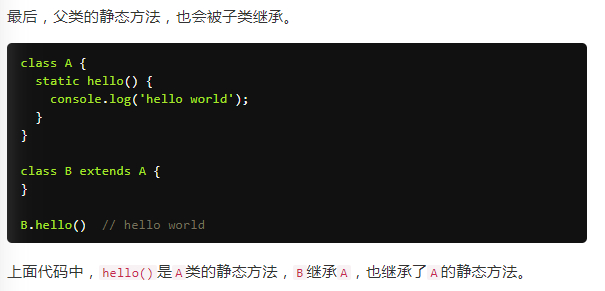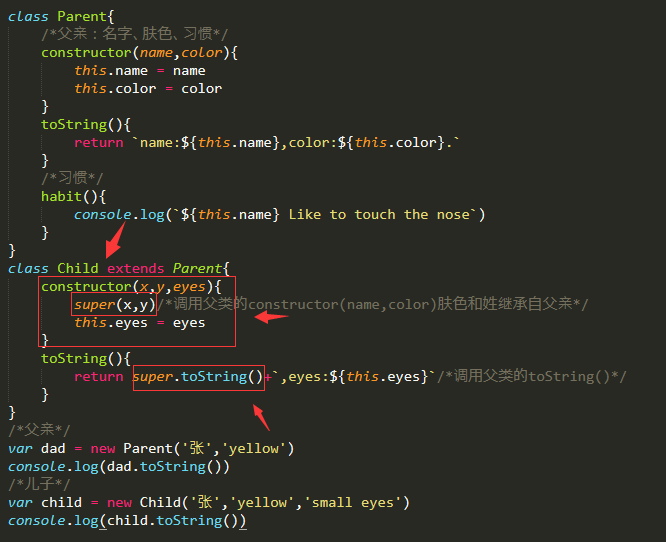(1)简介
Class 可以通过extends关键字实现继承,这比 ES5 的通过修改原型链实现继承,要清晰和方便很多。

上面代码定义了一个Child类,该类通过extends关键字,继承了Parent类的所有属性和方法。
但是由于没有部署任何代码,所以这两个类完全一样,等于复制了一个Parent类。下面,我们在Child内部加上代码。


super及this本质:
子类自己的this对象,必须先通过父类的构造函数完成塑造,得到与父类同样的实例属性和方法,然后再对其进行加工,
加上子类自己的实例属性和方法。
如果不调用super方法,子类就得不到this对象。
ES5 与 ES6继承区别
ES5 的继承,实质是先创造子类的实例对象this,然后再将父类的方法添加到this上面(Parent.apply(this))。
ES6 的继承机制完全不同,实质是先将父类实例对象的属性和方法,加到this上面(所以必须先调用super方法),然后再用子类的构造函数修改this。
(2)子类没有定义constructor构造器方法

(3)在子类的构造函数中,只有调用super之后,才可以使用this关键字


案例如下:

class Parent{ /*父亲:名字、肤色、习惯*/ constructor(name,color){ this.name = name this.color = color } toString(){ return `name:${this.name},color:${this.color}.` } /*习惯*/ habit(){ console.log(`${this.name} Like to touch the nose`) } } class Child extends Parent{ constructor(x,y,eyes){ super(x,y)/*调用父类的constructor(name,color)肤色和姓继承自父亲*/ this.eyes = eyes } toString(){ return super.toString()+`,eyes:${this.eyes}`/*调用父类的toString()*/ } } /*父亲*/ var dad = new Parent('张','yellow') console.log(dad.toString()) /*儿子*/ var child = new Child('张','yellow','small eyes') console.log(child.toString())
.